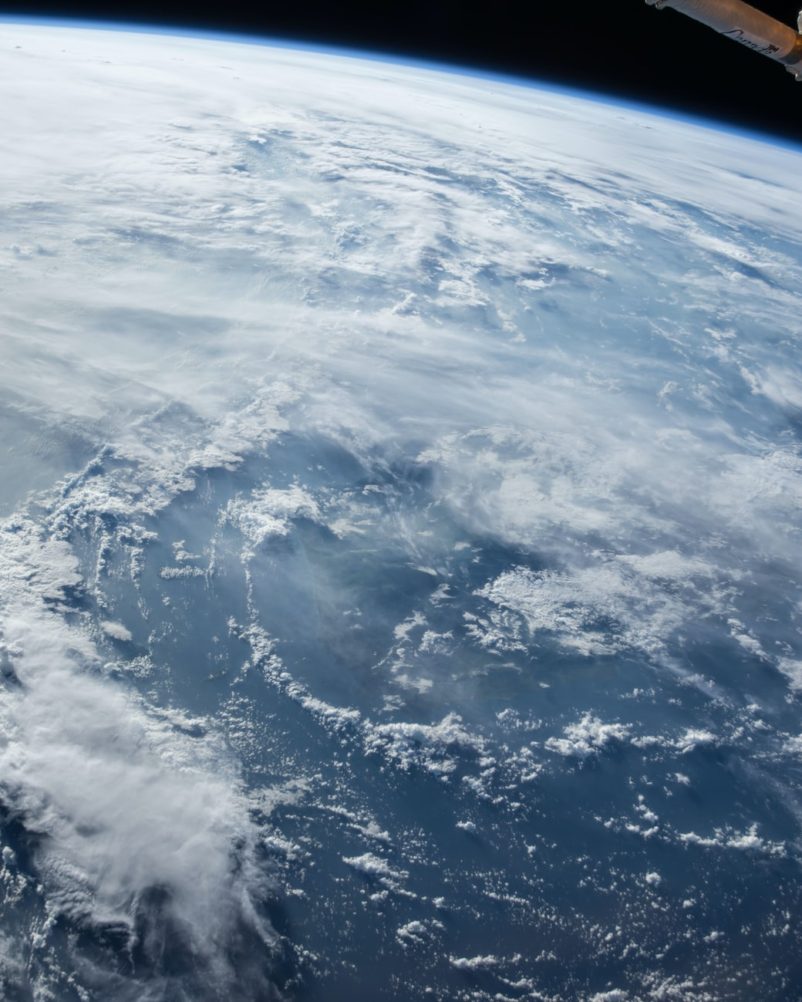
It’s been just over 50 years since Neil Armstrong first landed on the moon. He said the famous phrase, “That’s one small step for man. One giant leap for mankind.” That’s a fine sentiment, but as always, the rhetoric inherently showed patriarchal intentions that continue to this day. While this moment in space exploration was an indescribable turning point for our country and the world, history continues to be made in outer space half a century later. On October 21st 2019, the first all female spacewalk finally took place.
The two brilliant women who achieved this were Christina Koch and Jessica Meir. They exited the International Space Station, at an orbital altitude of 250 miles, and at a velocity of 17,500 m.p.h., for a job lasting seven hours and seventeen minutes. Obviously this is one of the most dangerous and challenging work environments imaginable; but of course women as ambitious and qualified as these two pulled it off.
“This is really a stepping stone to [the] eventual exploration of Mars, and even deeper into our solar system, and getting a chance to really explore some of those deep philosophical and scientific questions that we have,”
-Christina Koch on the upcoming Artemis missions
These two powerhouse space explorers trained together in the same astronaut class for the past six years. Space work is a very rigorous assignment that requires years of practice. Which of course leads to gatekeepers and glass ceilings, with the misogynist idea that women aren’t cut out for the challenge. But no, Koch and Meir proved them wrong. They’ve proved themselves qualified for a spacewalk and beyond. They’re such an inspiration, they made Time Magazine’s 100 Most Influential People list, and they eagerly anticipate their next great assignment.
The mission consisted of replacing batteries that store the ISS’s solar power, and the refurbishment of the Alpha Magnetic Spectrometer, a scientific device which scans the possibility of dark matter, which according to NASA, “explores the fundamental nature of the universe.” Both of these jobs are very important. In the case of the former, these adjustments towards clean, renewable energy are all crucial in the shift to a carbon-zero landscape. And in the latter, as we anticipate a future as a multiplanetary species, we need to finally understand what exactly is possible in our space travel. We’d all like to explore our solar system and even beyond.
The Journey to an All Female Spacewalk
While this will be the first time a female duo will be completing a space mission, this isn’t the first attempt at a women only spacewalk. Back in March of 2019, NASA had to halt the possibility of an all-female excursion that would have been led by Koch and her former crew mate, Anne McClain. The week of the scheduled space travel, NASA canceled the walk, claiming there were not ample spacesuits in inventory that would fit another female astronaut. McClain was cut from the mission and replaced with a male astronaut, Nick Hague. Once news broke of this change of roster, outrage ensued as the public questioned NASA’s lack of inclusivity in regards to suit sizes. And how could they not? NASA’s inability to deliver something so basic only shows their lack of priorities in women on the force.
Thankfully though, later in the year, the spacewalk went as initially intended. Christina Koch and Jessica Meir were the first women achieve this themselves, showing everyone how we’re just as ambitious and able as our male colleagues.
This solidified a new opportunity for an all-woman team to make history, and travel out into space. This monumental spacewalk isn’t just going to be a part of future textbooks— it’s going to open doors for the future generations of female astronauts, and their male companions. Little girls can now look up to women like Christina Koch and Jessica Meir and see that it is possible to dream big and (literally) reach for the stars. Not only that, but women will be more visible in another traditionally male dominated field of work. And since NASA rolled out a brand new suit that will fit female crewmates, that means more women will be able to work aboard, and outside of, the ISS.
The Future
The spacewalk was a huge success. And Koch and Meir already have ambitions for the next few years. NASA is about to start the Artemis program, which will bring humans back to the moon by 2024. The goals of this program are to prepare for the inevitable Mars missions, by developing new technologies and techniques. As well as of course encouraging global cooperation, and inspiring the next STEM generation. Meir promises, ““For all of the STEM fields — science, technology, engineering, math — there were so many resources put behind all of that back in the Apollo program that we saw a huge burgeoning of all of these industries that had ramifications and effects and benefits well outside of the space sector as well. So, we can really expect this from the Artemis program as well.”
Through this program, Christina Koch and Jessica Meir hope to be the first women on the moon. And why not? If anyone deserves this opportunity, surely it’s them. All of us are rooting for them, to go that incredible distance, and make women everywhere proud.
“I believe that Koch and Meir, by their sheer skill and execution, shift us closer to a template based on intelligence, agility, capability, integrity, courage and excellence.”
-Mae Jemison, the first Black woman in space
This long awaited spacewalk signified the immeasurable progress women have made in the fight for equality, on Earth and beyond. We can’t let something as small as an ill-fitting space suit stop women from entering into positions they deserve. This spacewalk meant being seen and heard in every workforce imaginable. It means inspiring girls and women around the world who have felt that they need to keep the bar low when it comes to their aspirations. It’s one small step for women, but one giant leap for womankind.
Interested in more women in science?




